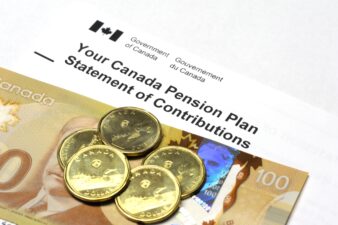Canada has a couple of retirement benefits for citizens. It has the Canadian Pension Plan (CPP) and the Old Age Security (OAS) to ensure citizens have a stable stream of income during their retirement.
To qualify for the CPP, an individual needs to be over 60 years of age and have made at least one valid contribution to this plan. The CPP is generally available for workers over the age of 65, though they can avail of these benefits at a reduced rate in case they start withdrawals at the age of 60.
The recent CPP enhancement has increased the total contribution rate to 10.5% of pensionable earnings, up from 10.2%. Though the CPP contribution rate will increase to 11.9% by 2023, it will still account for just a third of an individual’s pre-retirement income. In 2020, the maximum monthly amount for a new recipient starting pension at the age of 65 stood at $1,175.83, while the average monthly amount was $672.87.
The OAS benefit can be used by individuals who have stayed in Canada for over 10 years. This benefit begins at the age of 65, and the maximum monthly amount that can be received is $613.53.
In order to receive the maximum OAS amount, one has to stay for at least 40 years in the country. So, the maximum monthly amount that can be generated by the CPP and OAS is $1,789.36.
However, most Canadians have not stayed in the country for 40 years. If we consider an average stay of 20 years for the OAS and the average CPP payment, the monthly payout amounts to $979.63.
This figure might be barely enough for retirees staying in Canada’s biggest provinces. So, it is quite clear that retirees will need another stream of income to supplement these benefit payments. The Canada Revenue Agency also taxes the CPP and OAS payouts. Retirees can hence look to buy high-yield dividend stocks such as Capital Power (TSX:CPX) for their TFSA (Tax-Free Savings Account).
Capital Power has a dividend yield of 5.4%
For people who are no longer working, investing in equities can be considered risky. However, if you can identify a stock with strong fundamentals, low beta, and a juicy dividend yield, it can result in significant wealth creation.
Capital Power is a North American power-producing company. It develops, acquires, and operates power generation from several energy sources. Capital Power operates electric-generation facilities in Canada and the United States.
Capital Power has managed to grow sales from $1.14 billion in 2017 to $1.39 billion in 2018. Analysts expect sales to touch $1.6 billion in 2019 and $1.62 billion in 2020. The company’s EBITDA has grown from $484 million in 2013 to $669 million in 2018 and is expected to touch $907 million in 2019.
Capital Power stock is trading at a forward price-to-earnings multiple of 19.8. Compare this to its five-year estimated earnings growth of 8.6% and a forward dividend yield of 5.4%, and we can see that the stock is trading at a reasonable multiple.
Capital Power is part of a non-cyclical industry and has a beta of 0.71, which indicates low volatility. Its growth metrics will push the stock higher in the long term. In the last 12 months, Capital Power investors have gained 23.7% compared to the S&P 500 return of 22.7%.







